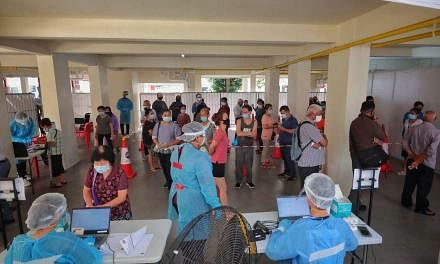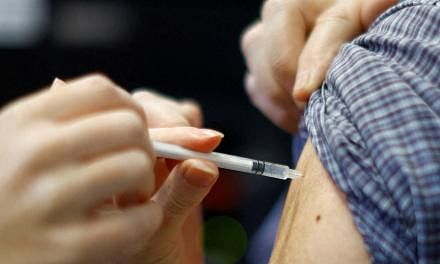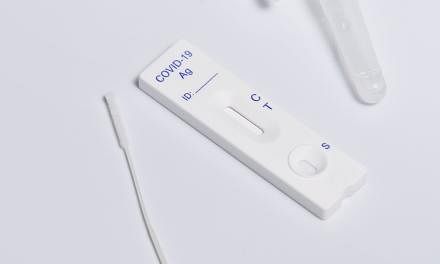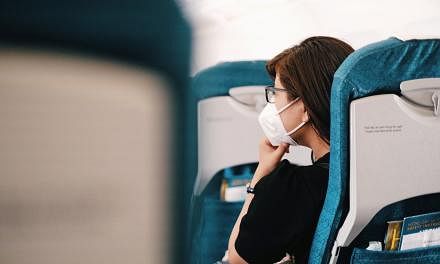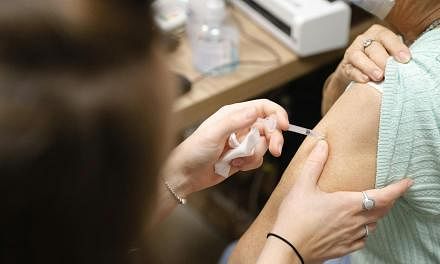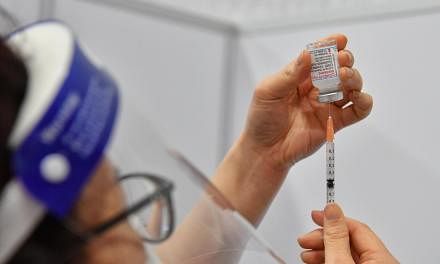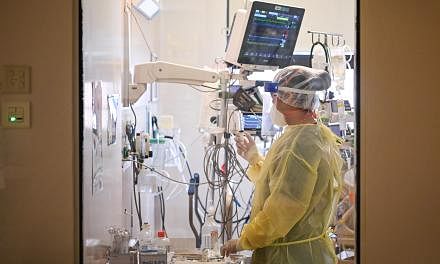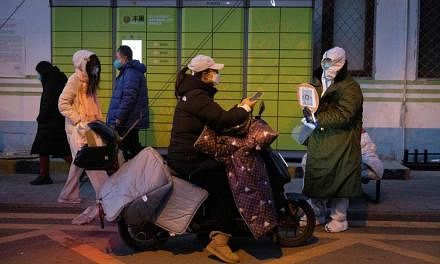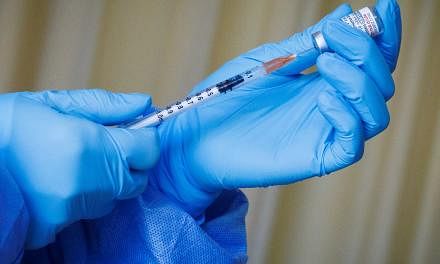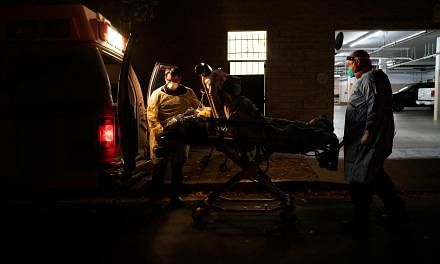BEIJING - Judging by Friday’s quiet streets in the heart of China’s capital and city eateries’ adherence to virus curbs, the anxieties created by the zero-Covid regime could hinder the world’s second-largest economy’s return to health.
Though the government on Wednesday loosened key parts of the strict controls that kept the pandemic largely at bay for the past three years, many appear wary of being too quick to shake off the shackles.
In the central city of Wuhan, where the pandemic erupted in late 2019, there were more signs of life, with some areas busy with commuters on Friday. But locals say a return to normal is still a long way off.
“They’ve relaxed the measures but, still, there’s nobody about,” said a taxi driver surnamed Wang, who did not want to give his full name. “These streets... they ought to be busy, full of people. But there’s no one. It’s dead out here.”
Yet China has been anything but placid during the past few weeks, with protests against the stifling Covid-19 curbs in many cities across the country that marked the biggest show of public discontent since President Xi Jinping came to power a decade ago.
Little more than a month after the National Health Commission stressed commitment to its strict virus containment policy, saying it was “putting people and lives first”, it has sounded a retreat from zero-Covid, and officials are now telling people they have less to fear.
Dr Zhong Nanshan, a leading Chinese epidemiologist famed for combating the 2003 Sars epidemic, said that 99 per cent of people now infected with the virus would recover in seven to 10 days, in comments reported by the People’s Daily, controlled by the ruling Communist Party of China.
But there are signs that the reassuring new message has still to convince many of the country’s 1.4 billion people. With the need for tests dropped and most infected people now being allowed to isolate at home, some have embraced new-found freedoms.
For others, habits formed under months of stifling lockdowns are proving hard to break. There were several empty seats in what should have been the peak rush hour for commuters on the Beijing subway on Friday morning, even though the city this week dropped the need to show negative tests to ride trains or enter offices.
Manufacturers and eateries remain cautious too, retaining Covid-19 curbs until they get a clearer picture of just how workplaces will be affected by the easing of stringent measures.

On Thursday, a sudden drop in Beijing’s official daily case numbers to less than 3,000 has sparked incredulity from members of the public who are seeing infection spread quickly through the capital, with even one of the government’s most prominent defenders questioning the veracity of the data.
Official figures show the tally has almost halved since the recent peak of 5,006 cases on Nov 30, despite a sudden U-turn in the country’s Covid-zero policy that has seen testing reined in and travel and isolation curbs eased.
The sharp decline in Beijing’s official cases has been mirrored in other major cities, bringing the country’s total to 16,363 on Thursday, the lowest since mid-November.
It has come as the use of Covid-19 test results is scrapped in many places, meaning frequent testing is no longer needed by many and infections are likely going undetected.
Beijing’s daily infections probably surpass the official nationwide total, Mr Hu Xijin, the former editor-in-chief of state-backed tabloid Global Times, wrote in an article published on his personal WeChat account. He did not provide further details on his calculation, but urged the authorities to either adjust how they report their figures or stop publishing them altogether, as the data is not accurately reflecting the situation.
“I think something must be wrong in the middle and local authorities are no longer reporting infections based on calculation of the actual situation,” Mr Hu wrote.
Meanwhile, businesses said they are expecting to have to grapple with long periods of absence by sick workers that could hamper operations, perhaps for months.
In downtown Beijing on Friday, a restaurant at a mall that serves local cuisine still does not offer dine-in service, while others on the same floor do.
“Although we are now allowed to resume eat-in service, our staff are sick and are still at home, so we haven’t got enough hands to serve meals,” a worker told Reuters, requesting anonymity.
China’s current tally of 5,235 Covid-19-related deaths is a tiny fraction of its population of 1.4 billion, and extremely low by global standards. Some experts have warned that toll could rise above 1.5 million if the exit is too hasty.
Analysts expect China’s economy to rebound late next year as it follows the rocky path trod by the rest of the world to open up and live with the disease. But a surge in infections will likely depress growth in the next few months.
A Reuters poll forecast China’s growth to slow to 3.2 per cent in 2022, far below the official target of around 5.5 per cent, marking one of the worst performances in almost half a century.“
“China’s three years behind, so what’s going to happen in China is what happened in the rest of the world,” said Mr Jeffrey Goldstein, a China-based consultant who helps foreign brands manufacture goods in Asia. “There’s going to be chaos.” REUTERS, BLOOMBERG

